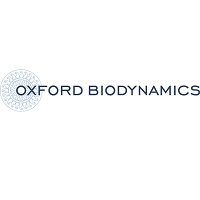Oxford Biodynamics PLC (LON:OBD) Chief Scientific Officer Dr Alexandre Akoulitchev caught up with DirectorsTalk for an exclusive interview to discuss their recent work published at the Summit on Emerging Immunotherapies for Hematologic Disease in Washington.
Q1: Now, Oxford Biodynamics has recently presented its work in Washington at the Summit on Emerging Immunotherapies for Hematologic Diseases. Alexandre, can you describe for us, in a few words, the field of immunotherapies in those diseases?
A1: I think there is an explosion of immunotherapies in the space of lymphoma treatments and as of today, what we’re seeing is a reasonably good responses and ethicacies coming for Hodgkin’s lymphoma, for immune checkpoint inhibitors.
In the space of non-Hodgkin’s lymphomas, the responses are quite modest, to put it mildly, and there are many attempts to test and develop various immune checkpoint inhibitors and activators in combinations and the different regimes. Unfortunately, many of the combinations also show very modest response, there are multiple attempts from the direction of chimeric antigen receptor T-cell therapies and entries from oncolytic viruses.
So, there’s a lot of going on in respect of big breakthroughs that at the moment we are quite limited in successful stories.
Q2: What are you bringing to the field of immunotherapies?
A2: We are bringing, with our biomarker platform, a very practical actionable stratification that allow to include and exclude patients on the basis of predictive biomarkers response in the trials in selection and treatment. We’re helping to identify profiles that de facto is encoded genetically suitable for response, marking non-response, partial response and importantly, side effects, hyper progressors, and some of the other side effects that are particularly well-known in culture technologies.
Q3: So, how extensive is OBD expertise in patient stratifications in immunotherapies applications?
A3: We’ve been working for quite a while in this space and the public is aware of our early studies on predicted stratification for Keytruda Pembrolizumab treatment in melanoma patients with the Mayo Clinic and since then, we expanded significantly into space of non-small cell lung cancer with a number of proprietary and commercial space. What is important to mention is that built that critical mass of insight and understanding for those indications but the efficacy of response in those indication remains high go for many of our other treatments and are of particular interest.
Q4: How relevant are the earlier studies to new immunotherapy applications?
A4: Well, they are very relevant, and they are very relevant because, of course, the immune system plays a critical role in application response to treatment and that means that across a number of indications particularly for this space of responders/non-responders, one can see a very significant common profiles at the level of biomarker modalities that we use today.
So, every study we have done de facto contributes significantly to very important understanding of the profiles in stratification in patients for response/non-response.
Q5: What advantages has Oxford Biodynamics’ EpiSwitch technology been demonstrating in its latest applications?
A5: It becomes very clear from many of our latest studies that as the biological field focussing on chromosome confirmation signatures, the modality that we used the biomarker with that, as this field confirms, we’re able to reach beyond established gene expression patterns and help to stratify patients in a non-invasion way, on the basis of blood read-outs. Even in some groups where a very significant effort has been done to build some stratification, but they’re very confusing and fail to materialise on the basis of simply transcriptional profile.
So, I think the modality delivers translation and clinical outcomes even in the very difficult cases and for us, it’s a very important advantage that we’re happy to demonstrate because it’s the only way to lead to actionable stratification of individual patients, go for exclusion or inclusion of patients for a particular trial way beyond the general statistical data obtained on a large number of patients where big validations can undermine actionable choices.
So, that’s very clear bottom line from many of the studies, particularly in the application for immunotherapies in limited patient recruitments, I think it’s a very valuable addition to already existing methodologies which altogether are trying to help to develop an efficacious treatment for cancer.

